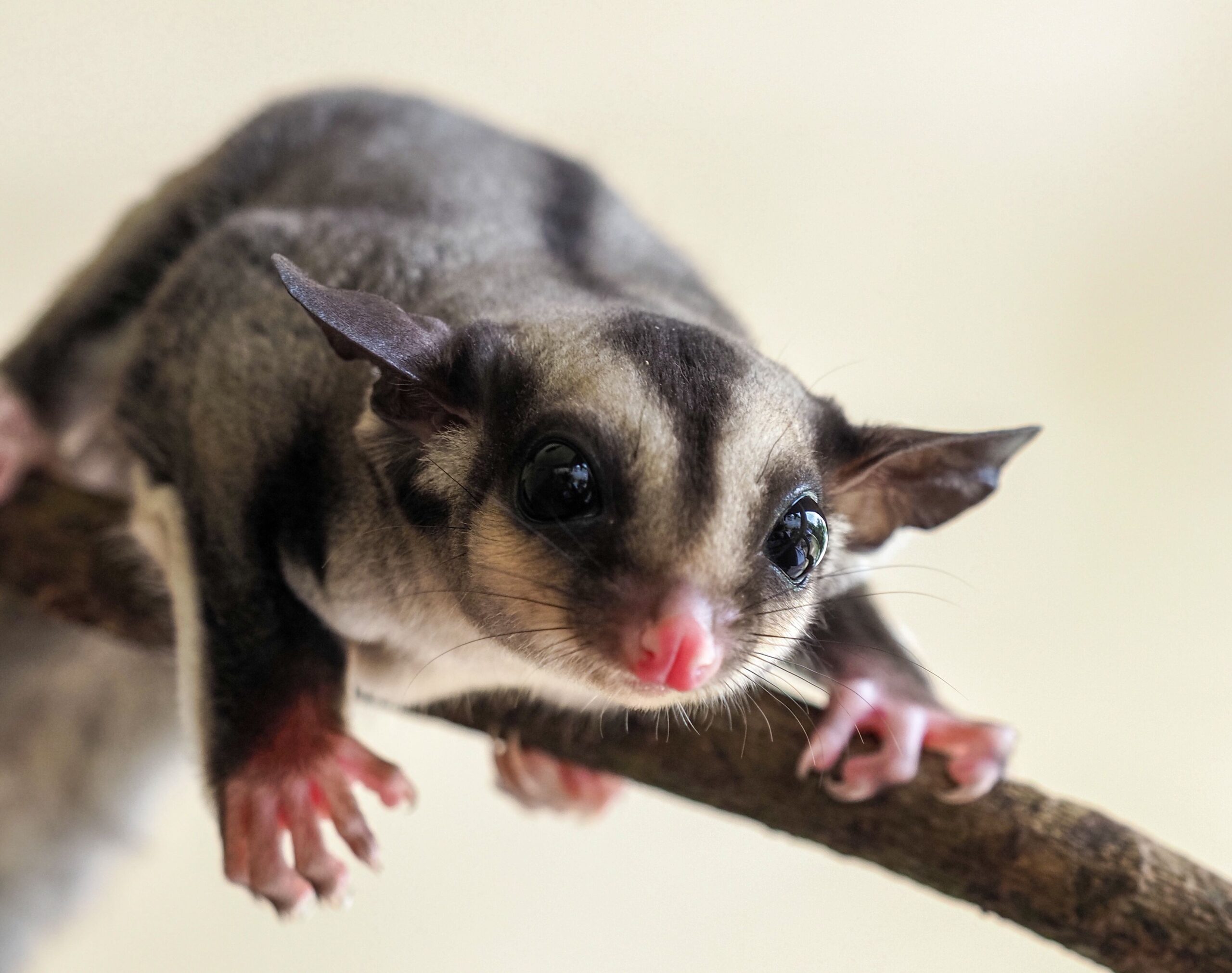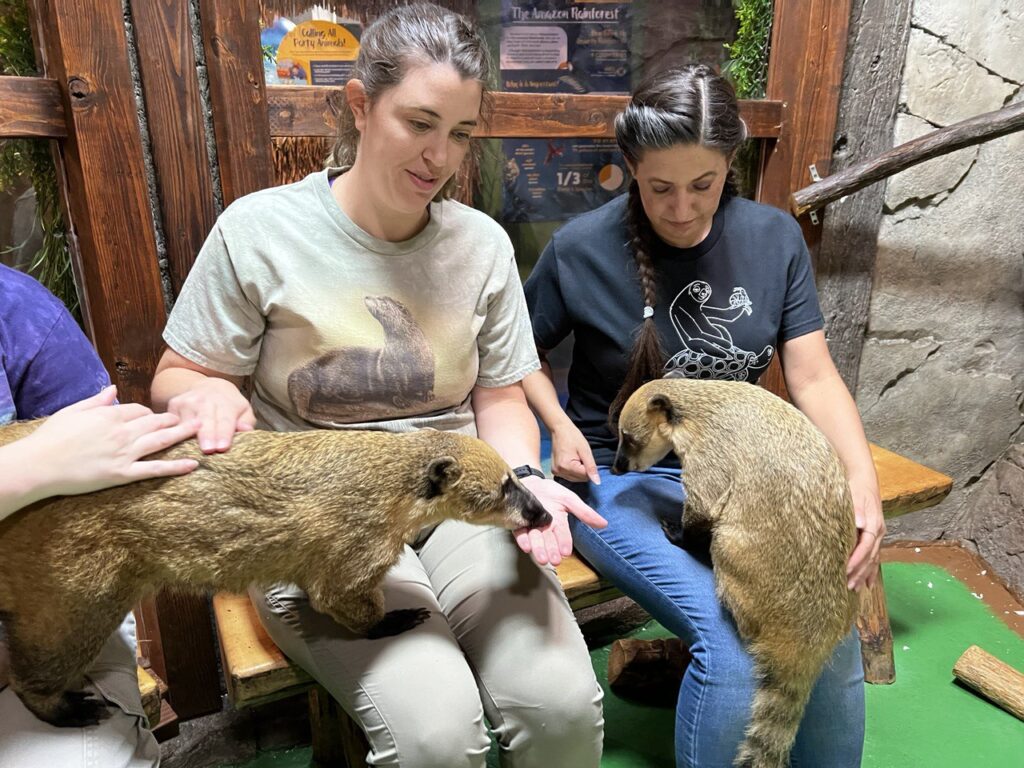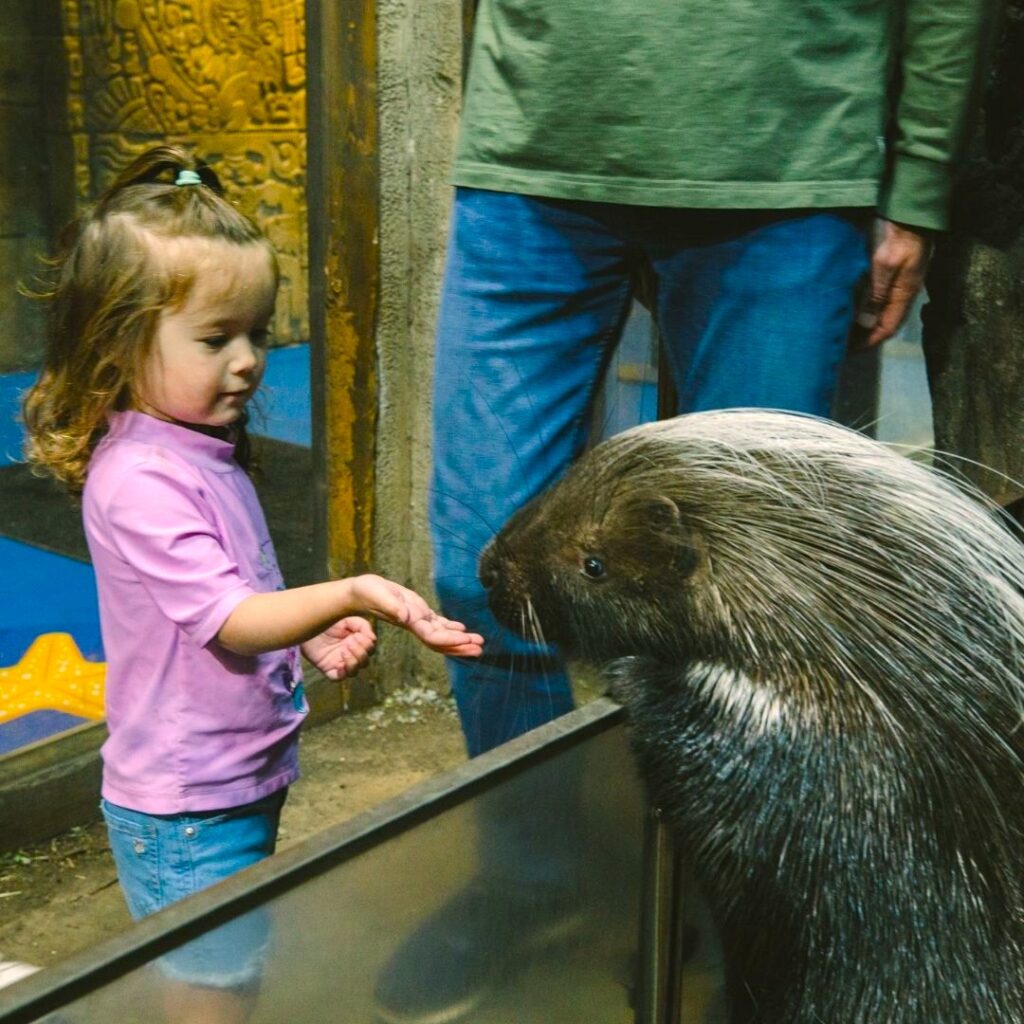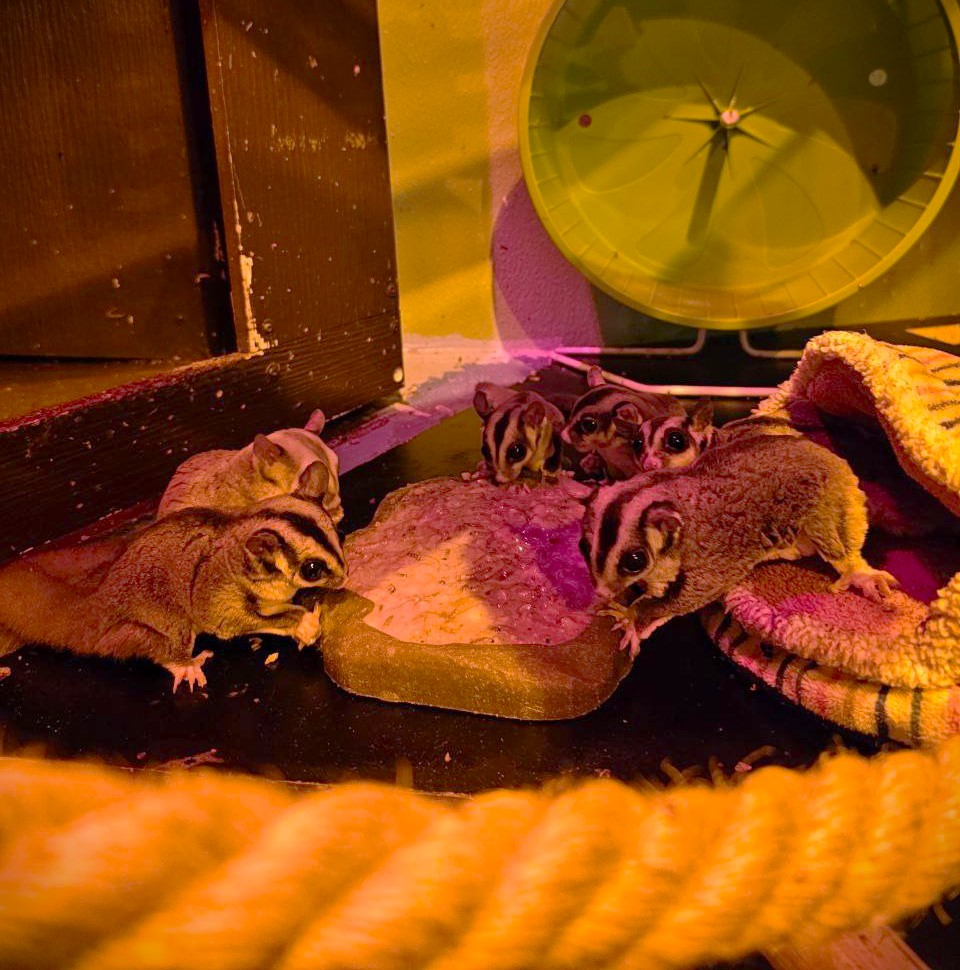SeaQuest Guide to Sugar Gliders
Share it on:

It’s a bird, it’s a plane, it’s… a Sugar Glider!?
Sugar Gliders are one of only three mammals capable of gliding through the air – the Flying Squirrel and the Flying Lemur. But despite some anatomical similarities, none of these animals are actually related. That means Sugar Gliders are literally in a class of their own!
What is a Sugar Glider?
In short, a Sugar Glider is a small marsupial with a unique skin membrane that spans all four limbs, allowing it to glide through the air. Note the word “Glide” not “Fly.” Unlike bats – the only mammal capable of true flight – Sugar Gliders cannot gain altitude once they’ve lept into the air. Instead, as their name suggests, they glide. Kind of like a paper airplane… but cuter.
And unlike paper airplanes, Sugar Gliders are capable of steering themselves mid-flight.
How Big Do Sugar Gliders Get?
Sugar gliders are relatively small, with adults measuring between 9 and 12 inches (from the tip of their nose to the tip of their tail) and weighing in at about 4 to 5 ounces. Their body shape is similar to a squirrel’s, which is why Sugar Gliders are often mistaken for flying squirrels.
What Do Sugar Gliders Eat?
Sugar Gliders are omnivores, meaning they’ll eat plants and other animals. Those “other animals” are often insects, but they have been known to gobble down lizards and small birds.
They’re very opportunistic feeders and will eat whatever’s easiest to find, such as seeds, fungi, nectar, fruit, bird eggs, and pollen. Speaking of pollen, because they eat so much of the stuff, they’re considered pollinators, just like bees and hummingbirds.
Did You Know:
- Sugar Gliders are nocturnal. Sleeping during the day keeps them out of harm’s way as most of their predators are active during daylight hours.
- Even as pets, they’re still nocturnal.
- Sugar Gliders are marsupials. They’re related to koala bears and kangaroos.
- Male Sugar Gliders have a bald spot!
- They can glide up to 150 feet!
How Long Do Sugar Gliders Live?
With proper care, domestic Sugar Gliders can live 15 years or longer, with one living to nearly 18 years old! They rarely live this long in the wild, where if they make it to 9 or 10, it’s considered a pretty good run.
Why the difference? In the wild, Sugar Gliders must forage for their own food, which isn’t always easy (or safe!) to find. But the biggest differentiator is predation. Sugar Gliders aren’t on the top of their food chain. They’ve got plenty of natural predators willing to eat them.
As pets, Sugar Gliders don’t have to forage for their food or dodge predators at every turn. Add in veterinary care, and it’s easy to see why they live so much longer in captivity.
Where Do Sugar Gliders Live
Sugar Gliders live in parts of Australia, Papua New Guinea, Indonesia, and the surrounding islands. They live in a variety of habitats, such as woodlands, rainforests, and even gardens and parks. Because they’re nocturnal, Sugar Gliders spend their days sleeping, usually in nests built into hollows.
Are Sugar Gliders Dangerous?
Sugar Gliders are not venomous or poisonous, and their small size means they’re about as dangerous to a human as a squirrel – out in the wild, anyway. In captivity
Do Sugar Gliders Make Good Pets
While adorable, Sugar Gliders aren’t the easiest pets to care for. They require skills and enclosures beyond the scope of a typical house pet. Their diet alone is difficult to satisfy. And there aren’t many vets trained to treat them.
Plus, they are very social creatures. They naturally want to be around others of their kind. Owning just one Sugar Glider can be detrimental to its mental health. Conversely, when several are kept as a group, they often become aggressive toward humans. Overcoming these social issues requires specialized training and time – something the average pet owner doesn’t have.
If you want to have the “Pet” experience with a Sugar Glider, it might be best to visit one that’s well-cared for by professionals who have the time, skills, and experience to satisfy their unique needs.
Are Sugar Gliders Endangered?
The International Union for Conservation of Nature (IUCN) lists Sugar Gliders as “Least Concern,” with stable populations in the wild. But that doesn’t mean human actions don’t affect them. Clearing land for agriculture strips them of their natural homes, and wondering pets hunt them for sport.
SeaQuest is committed to protecting our world’s oceans and endangered animals. We focus on how to be proactive in finding solutions. To learn more about how you can help SeaQuest with this cause, book your visit today at any of the following locations: Utah, Las Vegas, Dallas-Fort Worth, Sacramento, Minneapolis, Lynchburg, and New Jersey.




